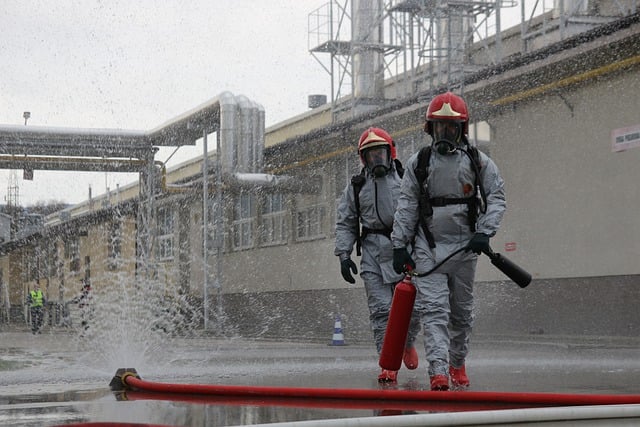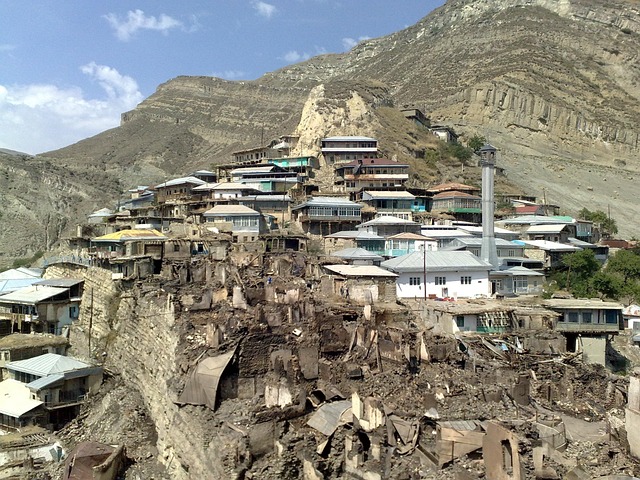Selling a fire-damaged property in California requires navigating complex legal, financial, and market challenges. Stringent building codes, potential liability, and buyer preferences for move-in ready homes create obstacles. Homeowners should assess damage, prioritize repairs, engage professionals, use strategic marketing, and consider working with a specialized real estate agent to successfully sell fire-damaged properties in California's dynamic market.
California’s housing market is a complex landscape, with unique dynamics driving real estate trends. This article delves into the intricacies of navigating this competitive environment, focusing on a specific challenge: selling fire-damaged properties in California. We explore market factors, legal considerations, and financial strategies to help sellers maximize their sales potential while understanding the unique complexities of the state’s housing sector. Learn how to effectively navigate the process of selling fire-damaged real estate in California.
- Understanding California's Housing Market Dynamics
- Challenges of Selling Fire-Damaged Properties in CA
- Legal and Financial Considerations for Sellers
- Strategies to Navigate and Maximize Sales Potential
Understanding California's Housing Market Dynamics

California’s housing market is a complex and ever-changing landscape, with unique dynamics that set it apart from other states. One key factor to consider is the impact of natural disasters, particularly wildfires, on property values. Selling fire-damaged properties in California presents both challenges and opportunities for homeowners and real estate agents alike. On one hand, these events can leave homes in need of significant repairs or even total destruction, which may deter potential buyers. However, with the right marketing strategies and disclosures, it’s possible to showcase the resilience of the market and attract buyers who appreciate the value of rebuilding in affected areas.
Understanding the local real estate trends is crucial for navigating this market. Some regions in California have seen a rise in housing prices due to increased demand and limited supply, while others may experience more volatile fluctuations after natural disasters. Homeowners looking to sell fire-damaged properties should consult with local experts who can provide insights into post-disaster recovery efforts and potential incentives for rebuilding. This knowledge will help them make informed decisions about repairs, pricing, and marketing strategies to ensure a successful sale in California’s dynamic housing market.
Challenges of Selling Fire-Damaged Properties in CA

Selling a fire-damaged property in California can be a challenging and complex process, often fraught with unique obstacles. The state’s stringent building codes and strict regulations regarding safety and rehabilitation are put in place for a reason, but they can significantly delay the sale of these properties. Homeowners face the task of obtaining permits, hiring licensed contractors, and meeting specific standards to ensure the property is safe and compliant—a lengthy process that many find daunting.
The impact of fire damage on a home’s value is also a significant concern. While some buyers may be drawn to purchasing a fixer-upper at a potentially lower price, others prefer move-in ready homes. The market’s preference for move-out ready conditions can devalue fire-damaged properties, making it difficult for homeowners to find interested buyers quickly. Additionally, the insurance claims process itself can be lengthy, leaving many homeowners with limited financial resources while they navigate these challenges.
Legal and Financial Considerations for Sellers

When considering to sell a fire-damaged property in California, there are several legal and financial aspects to keep in mind. The first step is to assess any potential liability associated with the property’s history. If the fire was due to negligence or code violations, sellers must address these issues proactively. This might involve costly repairs to bring the property up to safety standards, which can impact the overall selling price. Legal considerations come into play as well; California has specific regulations regarding disclosure and repair requirements for sold properties, especially those affected by disasters like fires. Sellers are legally obligated to disclose any known material defects that could affect a buyer’s decision.
Financial implications are another crucial factor. Selling a fire-damaged property may require more extensive documentation and financial disclosures during the lending process. Lenders might be hesitant to offer loans for such properties, leading to limited financing options for sellers. Additionally, insurance claims play a significant role; buyers will want to know about any previous claims made against the property, which can affect their trust in the sale. Therefore, open communication between seller and buyer is essential to navigate these legal and financial considerations successfully.
Strategies to Navigate and Maximize Sales Potential

Navigating the California housing market, especially when selling a fire-damaged property, requires a strategic approach. Homeowners should begin by thoroughly assessing the extent of damage and prioritizing repairs that will have the most significant impact on resale value. This may involve replacing structural elements, updating electrical systems, and ensuring proper decontamination to mitigate health risks associated with smoke and ash. Engaging the services of experienced professionals can help in this process, providing accurate estimates and guidance on compliance with local building codes.
Marketing and presentation are key to maximizing sales potential. Highlighting any recent renovations or improvements, even if they were not directly related to the fire damage, can showcase the property’s value and appeal. Professional photography and virtual tours can also play a significant role in attracting buyers’ attention, providing them with a comprehensive digital experience of the home before scheduling an in-person visit. Additionally, working with a knowledgeable real estate agent who understands the unique challenges of selling fire-damaged properties can make all the difference in achieving a successful sale.
California’s housing market presents unique challenges, especially when it comes to selling fire-damaged properties. Understanding the dynamics of this complex landscape is crucial for both sellers and buyers. By navigating legal and financial considerations, and employing effective strategies, homeowners can successfully maximize their sales potential in the face of these obstacles. Remember that, while selling a fire-damaged property in California may seem daunting, with the right approach, it can be a smoother and more profitable process.






